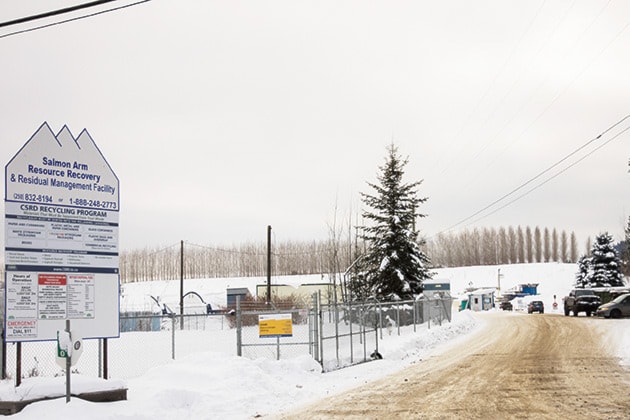Update: Tues. Jan. 24
Tempers are already rising at the news that tipping fees at Columbia Shuswap Regional District landfill and transfer station sites will be going up in June.
“The biggest change is you will now have to pay a minimum $5 user fee, and then there are increases to the tonnage rates as well,” says Ben Van Nostrand, CSRD’s team leader of Environmental Health.
Effective June 1, every trip to either a landfill or transfer station will include a $5 disposal fee. If you take two bags, they will be included in the basic $5 fee. Three bags will cost $6. Take another bag, add another $2.
Salmon arm residents who have municipal curbside pick-up are permitted to put out one bag and must tag additional bags with $2 tickets available at city hall.
Tonnage rates at scaled and unscaled facilities also increase and information on all rate changes is available atwww.csrd.bc.ca.
“We’re actually lowering the fees on ashphalt shingles and drywall, we’re trying to get construction folks to separate their waste,” he says.
Van Nostrand says the increase is necessary in order to have enough funds to close and monitor landfill sites as required bylaw when the time comes.
Although the landfills in Golden, Revelstoke, Sicamous and Salmon Arm are good for another 30-plus years, Van Nostrand said the cost of closing and monitoring a landfill site over a minimum of 25-year period is enormous.
At this time, there is an $18.2 million funding shortfall in the appropriate reserve fund, a shortfall that will be reduced by the increased tipping fees, which will take effect in all landfill and transfer sites because waste management is a regional district-wide program.
“We have the luxury right now of capacity, but that doesn’t negate the need for proper financial planning and funding for future closing requirements imposed by Ministry of Environment,” says Van Nostrand noting that closure on phase one of theSalmon Arm Landfill was completed in 2009-2010.
Phase two was opened in 2010, with a capacity of about 350,000 cubic metres of waste.
“In six years, we have put in about 170,000 cubic metres of waste and we’re about two years away from capping it and moving on to phase three in about three years,” he says, pointing out it costs millions to close a landfill in a way that prevents leaching of contaminants into the water table and the release of methane into the atmosphere.
Van Nostrand says the $5 user fee was chosen in order to be consistent with neighbouring regional districts and to try to reduce long lineups at landfills and transfer stations.
He advises resident, particularly those living within municipal boundaries, to go to city hall to buy tags to put additional bags out for curbside pick-up rather than taking a single bag to the landfill.
All municipalities and contractors have been informed of the changes and Van Nostrand says complaints have already begun to flow in. He asks that people who have complaints contact the regional district rather than vent at a landfill site.
“It’s not the attendants’ fault; I want to stress that,” he says. “Don’t yell at them, they’re just implementing regulations that the CSRD board has approved.”
Van Nostrand says the regional district is continuing on with plans to get food waste out of the waste stream.
